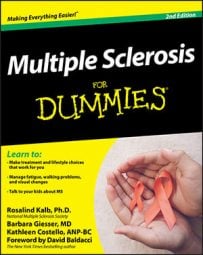Avonex, Betaseron, Extavia, Rebif, and Copaxone are the five injectable medications available for the treatment of multiple sclerosis (MS). Each of them primarily targets inflammation in the central nervous system (CNS).
Avonex, Betaseron, Extavia, and Rebif — which are all interferon beta medications — are approved for any person who experiences relapses — whether he or she has relapsing-remitting MS (RRMS), secondary-progressive MS (SPMS), or progressive-relapsing MS (PRMS).
Copaxone, which is a different kind of medication, is approved only for use in relapsing-remitting MS. None of these medications is approved for people diagnosed with primary-progressive MS (PPMS) because PPMS — which has no relapses or remissions — hasn’t been shown to respond to any of these medications.
MS injectable dosing
Some people may not like the idea of an injectable medication, but the fact is that these multiple sclerosis (MS) meds are all quite manageable, safe, and effective. You can learn to do the shots yourself, on a schedule that’s convenient for you.
Although all of the injectable medications reduce disease activity in people with relapsing forms of multiple sclerosis (MS), they differ in the dosing, frequency, and route of delivery:
Avonex: 30 micrograms once a week by intramuscular (into the muscle — IM) injection
Betaseron and Extavia: 250 micrograms every other day by subcutaneous (under the skin [SC]) injection
Rebif: 44 micrograms three times a week by SC injection
Copaxone: 20 milligrams (20,000 micrograms) every day by SC injection
Side effects of injectable MS medications
The injectable medications used to treat MS may cause any number of side effects. Consider the following side effects before choosing a medication for your treatment.
Avonex: Flu-like symptoms following injection (which lessen over time for many people). Rarer: depression, mild anemia, elevated liver enzymes, and liver toxicity.
Betaseron and Extavia: Flu-like symptoms following injection (which lessen over time for many people); injection-site reactions. Rarer: depression, elevated liver enzymes, and low white blood cell counts.
Copaxone: Injection-site reactions. Rarer: a reaction immediately after injection, which includes anxiety, chest tightness, shortness of breath, and flushing. This reaction lasts 5 to 10 minutes and has no known long-term effects.
Rebif: Flu-like symptoms following injection (which lessen over time for many people); injection site reactions. Rarer: Elevated liver enzymes, liver toxicity, and low white blood cell counts.
With all injectable medications, rotating injection sites on your body is important in order to protect your skin. Each medication comes with instructions on how to plan and keep track of the rotation. Skin reactions are much more common with subcutaneous injections than with intramuscular injections, but they can happen with any of the injectable medications.
None of the five injectable medications is head and shoulders above the others, and none of them stops the disease in its tracks. However, each has been shown to reduce the frequency and severity of MS relapses as well as new areas of inflammation and damage that can be seen on MRI scans.
Studies indicate that these meds may also slow disease progression and the progression of disability. You and your doctor can determine if one of the injectable medications is the right option for you.

